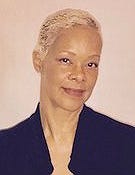Many companies "harvest other people's talent," rather than grow their own.
October 6, 2018

Yes, the IT job market is hot and it’s tough to find skilled IT professionals. Channel partners of every ilk – MSPs, VARs, consultants and agents – find the current IT talent pool to be shallow. The Bureau of Labor Statistics predicts that by 2020 there will be more than 1 million unfilled tech jobs.
This industry has a problem.
What if your approach to filling the talent pipeline for your company exacerbates the problem? What if by taking off the blinders and thinking outside the box, your organization could be on its way to filling it?
There are experts who have been working in human resources and tech recruiting for years who have learned how businesses can move beyond the status quo when it comes to recruiting, hiring and retaining IT talent.
Channel Futures caught up with three industry pros who share some of their experience and best practices. If you want to get the full scoop, join Yvette Steele, senior manager, member communities with CompTIA; Patrice Jimerson, global director, diversity and North American talent acquisition at Appirio; and Franklin Reed, director of inclusion and diversity with TekSystems, at the upcoming education session – Six Ways to Build Your 2020 Talent Pipeline – part of the business strategy conference track sponsored by Cyxtera, at Channel Partners Evolution, Wednesday, Oct. 10, in Philadelphia.
Channel Futures: Finding IT talent is a hot topic now and has been for a while, and there’s no slowing down. The pace of emerging technologies getting readied for prime time continues to pick up speed. What’s the status quo and why doesn’t it work?
Yvette Steele: The status quo is … this is the way we’ve always done it, here’s our recruiting process, here’s our interview process, selection process, etc. With the changing demographics, what worked five to 10 years ago may not apply today. That’s a process problem.
Companies also have blinders; however, I would have to say, that given the limited pool of candidates, acquiring blinders is a good thing. Let me clarify. Blind resume screening for example, or blind skills-based screening software tools added to the recruiting process can eliminate bias and yield more candidates. When my communities get together to discuss this issue, we’ve talked most often about unconscious bias — are you giving Roberto Gonzales the same consideration as John Smith, sourcing candidates from the same places that everyone else is using or the same places you’ve always used? And probably the most subtle blinder [is] the lack of organizational commitment — where managers are simply checking a box and there’s no alignment to the business strategy.

Yvette Steele
Yvette Steele
Franklin Reed: The No. 1 blinder is not really understanding the state of market — meaning how tight the labor pool is. Everything about the way we hire IT talent has changed from just five to seven years ago, including to injection of artificial intelligence. Everything from where we’re sourcing from, the employee value proposition, the interview process, compensation, work flexibility, career paths, technology exposure, etc., has changed. HR teams have been slow to adapt, and the best companies have become more agile in their approach; they’re the ones securing the best talent.

Franklin Reed
Franklin Reed
CF: What does the organization need to understand about diversity, changing the process, the status quo?
Patrice Jimerson: I believe that everybody in an organization understands what the overarching role is around recruiting and staffing diverse talent. In general, people get that they want more diversity, but they don’t understand what their role is in it. Even if you’re not a hiring manager, everyone in the organization plays a role in bringing new talent into the organization.

Patrice Jimerson
Patrice Jimerson
Knowing the process allows each person to be proactive about where they can add value — whether that’s being part of the hiring/interviewing process, serving as a buddy during on-boarding, or helping with candidate follow-up — this is a team sport and not just the recruiter’s responsibility.
CF: We keep hearing about how the talent pool is small. Your thoughts?
PJ: I can speak to how I see it in my current role at my current organization. There’s the expectation that people come in with a lot of experience doing a very finite task, so in my world that means having Salesforce or Workday experience. We hire people with the expectation that at some level they’ve done this job before and that skews our ability to fill those positions rapidly.
We no longer hire for potential and it’s very difficult to get managers in the tech space to say, “Hey, they’ve [a job candidate] never done ‘this’ before but they’re smart, have a strong technology background, outstanding communication skills – both written and verbal – they know how to hold a room from a consulting perspective … I can teach them Workday or whatever it is.”
We’ve gotten very focused on hiring people who can hit the ground running, which I call harvesting other people’s talent, as opposed to growing our own.
CF: There are benefits to rethinking the status quo process for hiring talent?
YS: Expanding your workforce to be diverse means many things to many people — gender, race, ethnicity, veterans and so on. To be effective, it will require commitment, strategic planning and accountability — as would any other organizational goal. It will require an investment of time and maybe money depending on your approach and size of business. One thing for sure, diverse thinking in organizations leads to more innovation, more profits and better corporate culture when you consciously and purposefully pursue it. As your organization becomes more successful and your position on diversity becomes a part of your brand, you will attract talent.
CF: What will attendees walk away with after attending the upcoming education session?
FR: During this session we’re going to discuss real changes and approaches that need to be considered to engage talent — the best talent. We’re going to challenge our way to thinking and consider alternative approaches that get us to the same results which is hiring great talent.
PJ: Attendees are going to learn about managing the evolution of the pipeline more consistently and in an inclusive manner. They’ll hear about best practices and also the evolution of those best practices, so they can take them back to their companies and parse them to best rethink their strategy and how to develop a communication plan that documents the things they want to do versus the things that were done in the past, and how they’ll move forward.
About the Author(s)
You May Also Like


